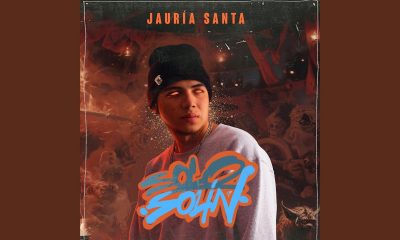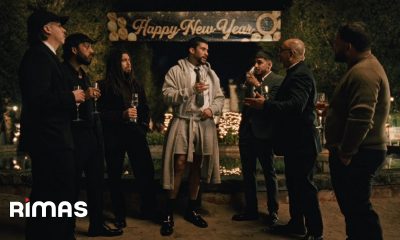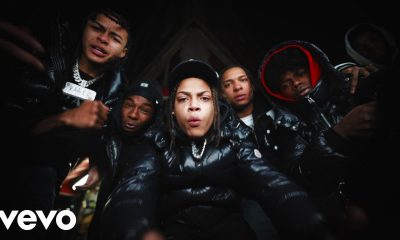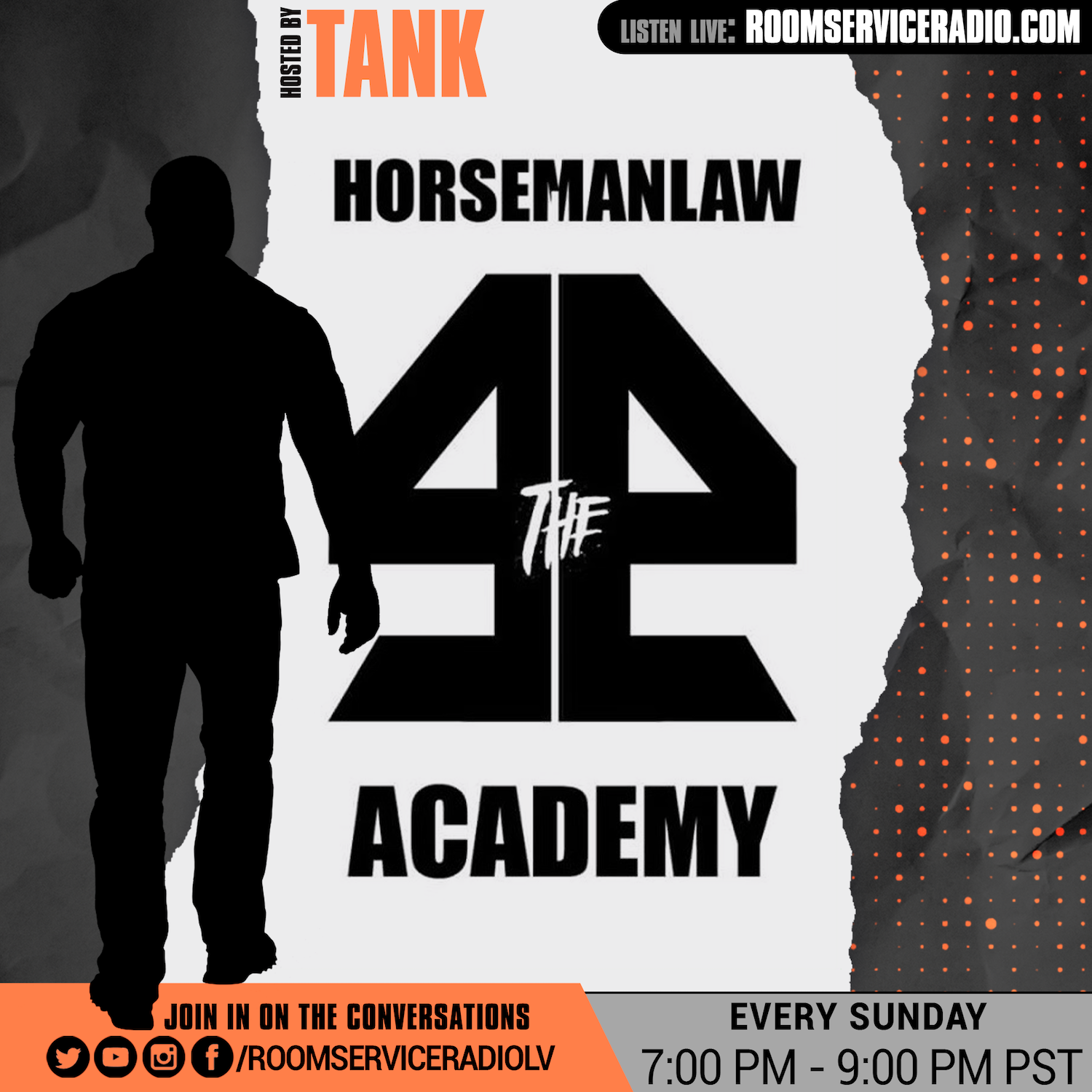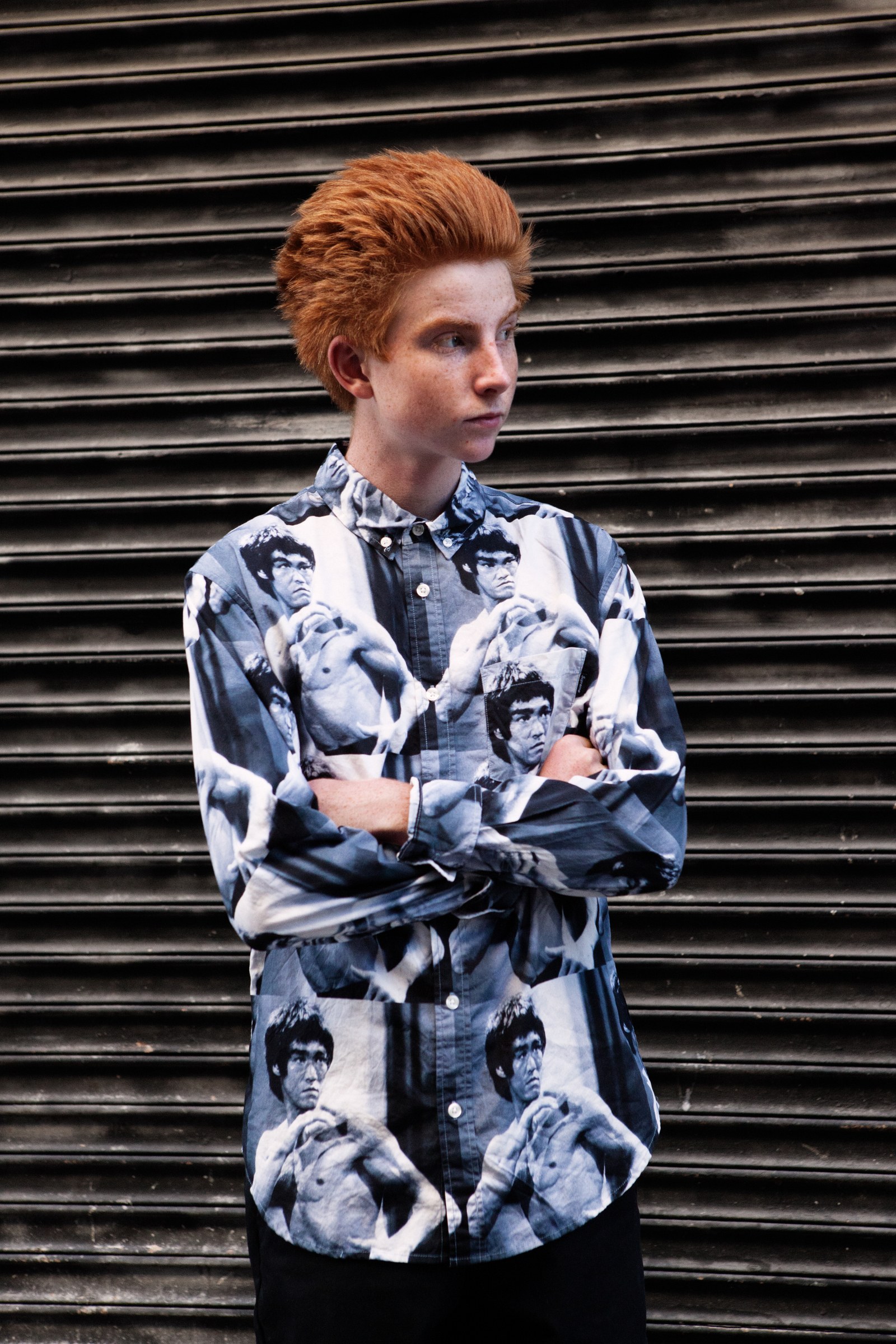
Supreme: How an Upstart NYC Skate Shop Changed Fashion Forever
Brands like A Bathing Ape and Neighborhood—Jebbia’s new neighbors in Harajuku—had already established large fan bases. He was drawing inspiration. But Japanese brands and their customers were not the only things Jebbia had his eye on in the late ’90s and early ’00s. “We weren’t blind to Helmut Lang. We weren’t blind to FUBU, either,” Jebbia says. “There was an awareness of a lot of what was going on out there, being in New York. But there wasn’t as many big fashion brands then. There just wasn’t. But I’ve got to say: Helmut Lang at that time was really important, personally.”
Atkinson recalls that Helmut Lang was the singular brand Jebbia referenced during their time working together. “He only used to wear Helmut Lang T-shirts,” he says. “He was very particular about how the collars fit him. He used that as a benchmark.”
Jebbia says that his standards for quality were based on what was already being made. “With a lot of the skate brands at the time, the quality wasn’t good, the fabrics were kind of crappy,” Jebbia says. “So we had to make our product as good as the brands that kids in New York were wearing: Polo, Nautica, Carhartt, Levis.” By avoiding wholesale he could keep prices down. “Our thing,” Jebbia says, “was to try and make things as good as the best brands out there—but not the fashion brands—and have that quality that people are going to wear these items for a long, long time.”
As the ambitions grew, the operation became more sophisticated. Luke Meier, who’d been put in charge of design in 2002, supervised a growing staff that had expanded capabilities. Meier recalls that the immediacy with which his designs hit the store were huge boons for Supreme. “When you think about a tailor shop or somewhere where they’re really making a product, you can sell it, like, a block away,” he says. “You feel very closely connected to who’s buying it, who’s wearing it, why it’s cool. It’s not like you’re in some studio across the world.”
Meier moved on from his full-time position at Supreme in 2009 and later launched the label OAMC. In 2017 he and his wife, Lucie Meier, were named co-creative directors of Jil Sander. “Surprisingly,” he says of leaping from Supreme to a high-fashion luxury brand, “it’s not so different.”
Angelo Baque, who founded the brand Awake NY, started at Supreme in 2006, back when, he says, the company was still a “mom-and-pop” operation. In the years that followed, the brand expanded rapidly, introducing new pieces like, say, the aforementioned oxford shirts and cardigans. “Twelve years later everyone is making those,” he says, “but for Supreme to make a cardigan in 2007, that was fucking revolutionary for the brand.”
For much of that period of expansion, Brendon Babenzien was in charge of design at Supreme (he has since launched his own brand, Noah). “It was really fun,” Babenzien says, “being able to indulge both the youthful side—the side that I grew up with—but also address some of the needs of our audience who had been with the brand from the beginning.” In other words, making sweaters that were as sought-after as Supreme’s tees. “I had high hopes to have Supreme be able to simultaneously make really progressive things and truly classic things,” he says. “I think we accomplished that.”
Pulling off that kind of expansion, Jebbia says, required paying careful attention to Supreme’s customers. “We try and evolve,” he says. “Twenty years ago, if we’d have put a fur coat out at the shop, the skaters would have stormed out. Our windows would have been smashed. Young people are a lot more open-minded today. We’re trying to make things for today’s youth. We’re not stuck in a box.”
Aidan Mackey in the Supreme x Bruce Lee collaboration shirt from the fall- winter 2013 collection.
Chris ShontingVelour tracksuit, fall-winter 2017.
Courtesy of SupremeOne undeniable result of all this growth is that in the past few years, Supreme has become massively popular. There’s a very good chance that if you are not a Supreme obsessive, you have a young cousin or niece or nephew who is. There were also those who were there from the beginning, like Leonard McGurr, the artist better known as Futura, who has a pair of camo cargo pants that he bought at Supreme on Lafayette in 1995 and still wears today. Guys who never felt ripped off buying a $42 camp cap or a $110 oxford shirt, so they kept going back.
Article written by Noah Johnson #GQ




